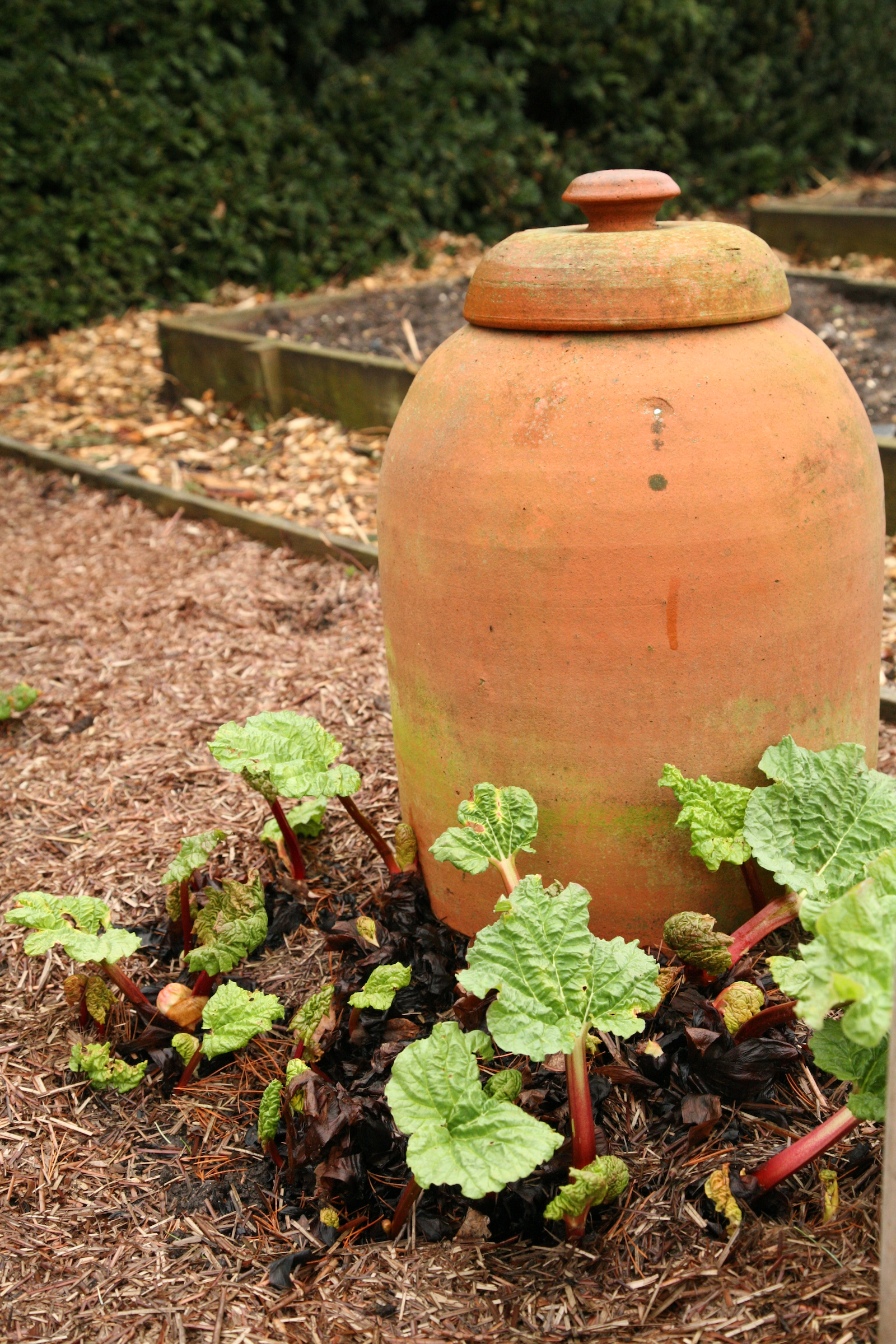How to grow forced rhubarb – easy steps to crop pieplant early
Grow forced rhubarb and enjoy the tender stems and delicate flavor of this popular crop early in the season


Though treated as a fruit and used in puddings and baked goods – hence its other name of ‘pieplant’ – rhubarb is actually a vegetable with edible stalks. It thrives in cold conditions and is a favorite in Alaska, where it can grow to five feet or more.
But you can grow rhubarb from Maine to Oregon; though not in the southern states, where it wilts in the hot temperatures. It's a popular crop for desserts in the UK and across Europe, too.
Forced rhubarb: the cream of the rhubarb crop

Rhubarb that is specially grown to be harvested early is known as forced rhubarb, with its season from late December to the end of March. With pretty pink stalks, and a delicate flavor and texture, it’s also know as ‘champagne rhubarb’ and is considered the crème de la crème of the rhubarb crop.
In the UK, forced rhubarb from Yorkshire’s ‘Rhubarb Triangle’ is famed for its sweetness and flavor – the nine square mile area once produced 90 per cent of the world’s winter forced rhubarb.
The plants are grown outside for two years, to strengthen their roots, then brought into heated forcing sheds and grown in the dark. The crop grows quickly in the warm atmosphere, the stems extending upwards as they search for light.
How to force rhubarb

You can force rhubarb in your own backyard or kitchen garden by covering the crown of the plant with a pot to prevent light reaching it, then banking straw around to create warmth.
Varieties such as Victoria and Timperley Early suit an early forced start.
Design expertise in your inbox – from inspiring decorating ideas and beautiful celebrity homes to practical gardening advice and shopping round-ups.
1. Cover the rhubarb
‘Cover the rhubarb crown with a box at least 20 inches high and cover this with manure,’ says Guy Barter, Chief Horticultural Adviser at the Royal Horticultural Society and author of Growing Vegetables & Herbs.
You could also use a dustbin or a terracotta rhubarb pot to cover the crown of the plant. The important thing is to prevent any light reaching the rhubarb, so that it cannot photosynthesize. This is what makes the stalks pale pink and tender, without the bitterness of rhubarb grown in the usual way.
2. Keep it warm
Some gardeners pile straw around the box or pot covering, instead of manure. The important thing is to keep the rhubarb warm, as this will speed up the growth process and you can pick your rhubarb earlier.
3. Harvest the stems

When to harvest rhubarb? Once your rhubarb plant is established the stems can then be picked from March or from April, for later ones, up until June.
To harvest rhubarb, ‘the stem parts easily from the crown with a twist and a pull,’ explains Tom Petherick, sustainable living expert and author of Sufficient. ‘After two or three croppings, remove the cover to let the plant grow in full light.’
Instead of the small yellow leaves of forced rhubarb, the plant will soon develop strong green leaves that reinvigorate the plant by taking energy back into the crown. You can continue cropping rhubarb stems into early summer, although these will be more stringy and bitter than the forced stems.
Ideas for using forced rhubarb

Pair rhubarb with complementary flavours such as ginger, pear, rosewater and vanilla.
Roast the stems in the oven for 15 minutes to intensify the flavour, or poach in water or fruit juice for 8-10 minutes until soft.
Surprise guests when you’re entertaining by making more than rhubarb pie or crumble! Rhubarb works in salads, alongside pork and salmon, or even in sweet (with strawberries) and savory (try lentils) soup.
Does forced rhubarb taste different?
There's a reason that gardeners and homesteaders go to the trouble of forcing rhubarb, and it's not just so they can eat it earlier in the year.
When the plant is deprived of light, it doesn't produce the large leaves it usually would. The glucose that would usually fuel this growth is instead retained in the stems, making them sweeter than conventionally grown rhubarb, which tends to be tarter.
As the stems grow quickly as the plant searches for light, they also have less fiber than typical rhubarb, so they are more tender, too.
Why is it called forced rhubarb?
Forcing vegetables gets plants to grow outside of their normal habit. Covering the crown of the plant and keeping it warm tricks the rhubarb plant out of its winter hibernation, so it starts to grow sooner than it would naturally.
You can also blanch rhubarb by covering it as it grows, but without warming it up to promote early growth.
Andrea has been immersed in the world of homes, interiors and lifestyle since her first job in journalism, on Ideal Home. She went from women's magazine Options to Frank. From there it was on to the launch of Red magazine, where she stayed for 10 years and became Assistant Editor. She then shifted into freelancing, and spent 14 years writing for everyone from The Telegraph to The Sunday Times, Livingetc, Stylist and Woman & Home. She was then offered the job as Editor on Country Homes & Interiors, and now combines that role with writing for sister title homesandgardens.com.
